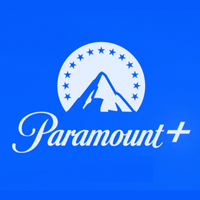'Star Trek: Discovery' season 5 episode 5 'Mirrors' is a quality installment, but weighed down by another anchor of nostalgia
This entire episode was more than likely written for the sole reason that the sets from "Strange New Worlds" could be utilized.
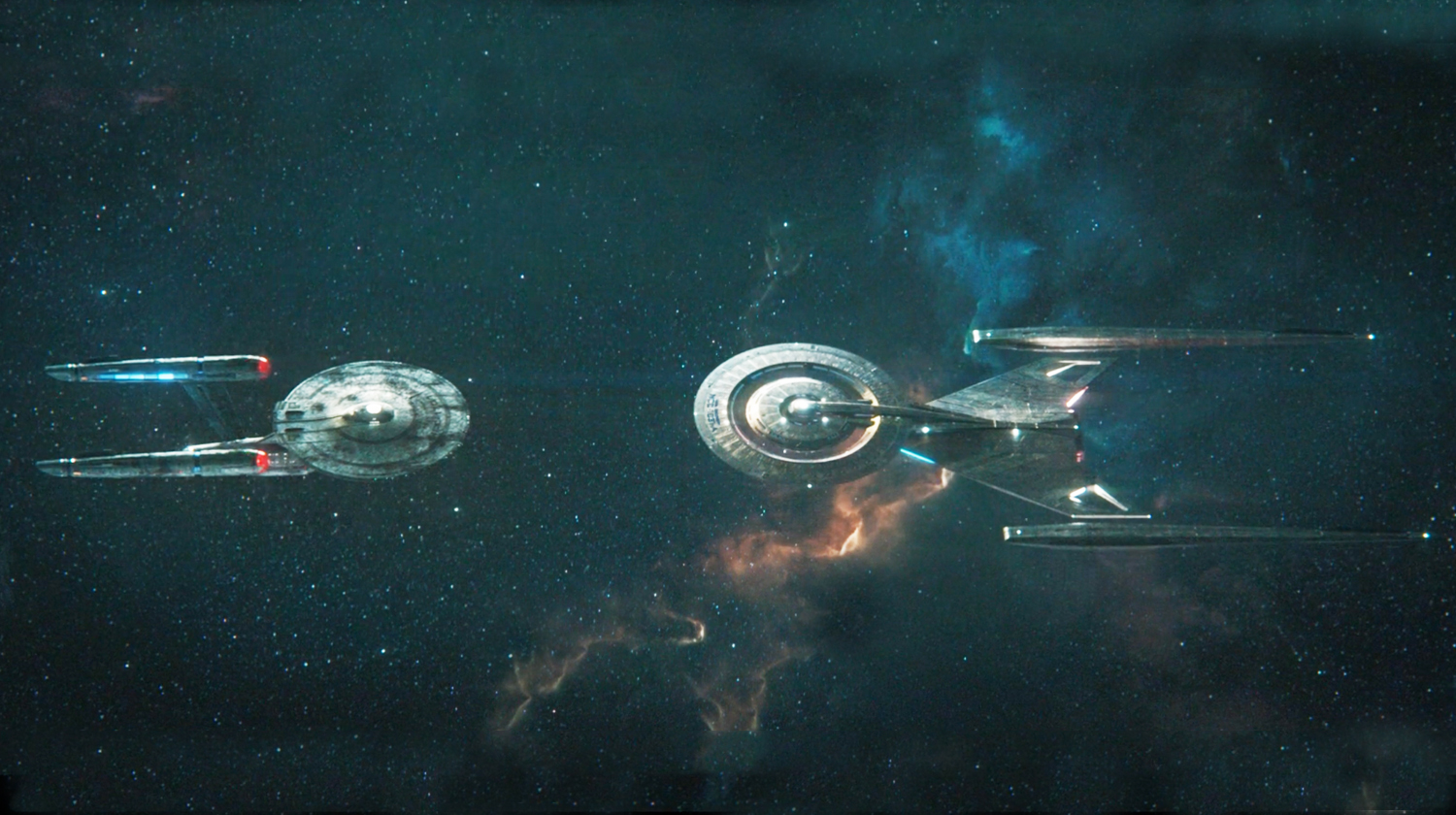
Warning: Spoilers ahead for "Star Trek: Discovery" season 5, episode 5
The chase across the galaxy for the Progenitors MacGuffin continues, offering chances to insert stand-alone, episode-length adventures along the way. And this week's installment, entitled "Mirrors" features a brief and very random reminder that the Mirror Universe exists.
And that alone would've made an genuinely enthralling episode, but...Alex Kurtzman et al could not resist the temptation for an utterly pointless and thoroughly unnecessary throwback to the USS Enterprise. Honestly, these people have a serious problem, they should seek help.
To put all of this into context, the crew of the USS Discovery continue their pursuit of Malinne 'Moll' Ravel (Eve Harlow) and L'ak (Elias Toufexis) and that chase leads them to er...well, you know, a giant, space-time swirly orifice that fills the viewscreen. Apparently, it's some sort of wormhole that's spectacularly unstable because of the constant matter/anti-matter reactions that are taking place at the opening. It's actually more than a little reminiscent of the inside of the V'ger spacecraft from "Star Trek: The Motion Picture" and that's just fine.
Watch Star Trek on Paramount Plus: Get a one month free trial
Get all the Star Trek content you can possibly handle with this free trial of Paramount Plus. Watch new shows like Star Trek: Discovery and all the classic Trek movies and TV shows too. Plans start from $4.99/month after the trial ends.
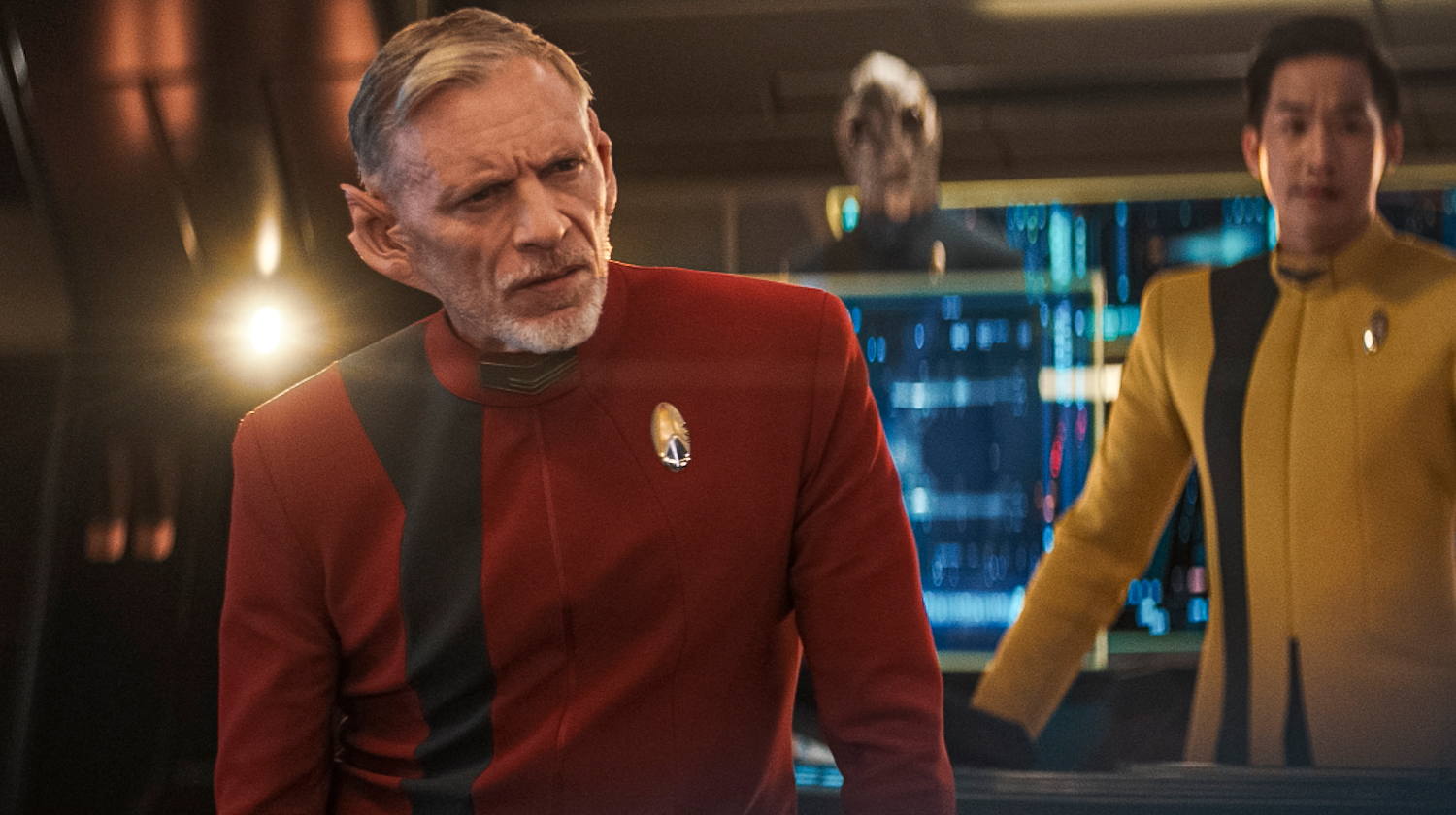
But it's what they find inside that grinds gears. Since the Discovery is too big to squeeze through the constantly opening and closing orifice, Capt. Burnham (Sonequa Martin-Green) and Book (David Ajala) take a shuttle through only to find...the ISS Enterprise. Yes, indeed, last seen (and only seen, actually) in the epic "The Original Series" episode "Mirror, Mirror" (S02, E04).
While beaming back to the USS Enterprise during an ion storm, Kirk, McCoy, Scotty and Uhura materialize aboard a almost-identical Enterprise in a parallel universe. Here, the United Federation of Planets has been replaced by the Terran Empire and its inhabitants are violent and cruel. Their only hope is to artificially reproduce the effects of the storm to facilitate a return to their own universe. ("Imperial Space Ship replaces the traditional "United Space Ship.")
And while the idea of finding a derelict, 900-year-old starship from the latter half of the 23rd century is a great idea, in the name of the Great Prophet Zarquon, why-oh-why did it have to be the Enterprise? There are — at least — 10 other Constitution Class starships that could've been potentially chosen and thus still allowing the updated sets from "Strange New Worlds" to have been used.
Get the Space.com Newsletter
Breaking space news, the latest updates on rocket launches, skywatching events and more!
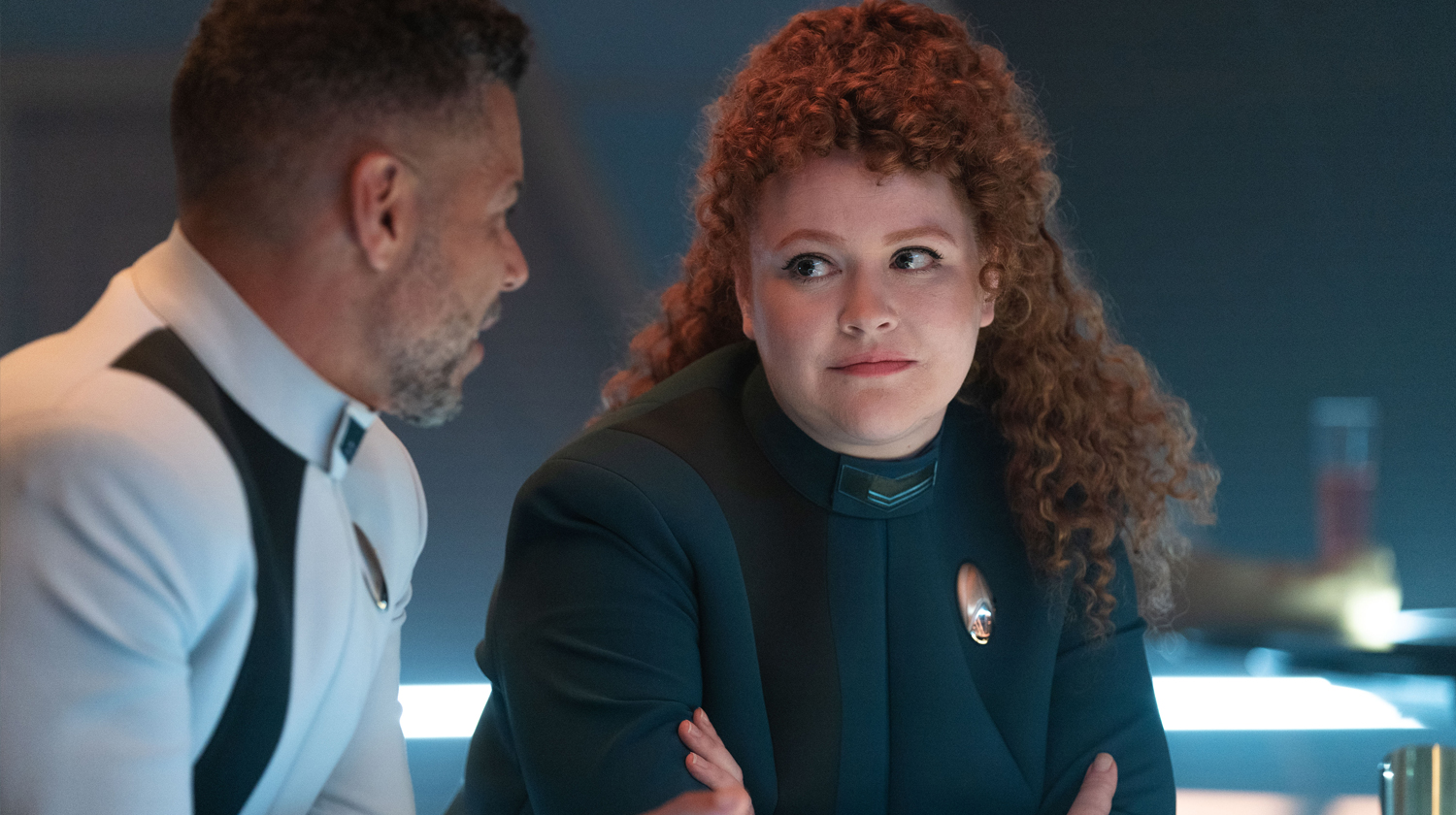
The USS Cayuga (NCC-1557), USS Constellation (NCC-1017), USS Defiant (NCC-1764), USS Excalibur (NCC-1664), USS Exeter (NCC-1672), USS Hood (NCC-1703), USS Intrepid (NCC-1631), USS Lexington (NCC-1709), USS New Jersey (NCC-1975) and the USS Potemkin (NCC-1657). And those are just the ones that are canon. Another new vessel could just as easily have been introduced as it's not unknown for Nu-Trek to bring brand new ships to the line.
And of course Burnham makes reference to the fact that her brother, Spock, served on this ship, which is probably another reason why the Enterprise was forced upon the writers. And according to some extremely rushed exposition, most of the crew escaped the weird wibblywobbly wormhole and went on to lead peaceful and productive lives — we assume somewhere not too far away given how long ago it happened and the current location in deep space — in a somewhat Space Seed scenario. Another interesting throwaway remark from Burnham was, "Crossing between universes has been impossible for centuries now," which shuts down that potential story avenue rather abruptly.
But let's also focus on why this episode could've been near-faultless if only someone could counsel Paramount showrunners on how to ween themselves off of nostalgia addiction. This week we get to see the whole Moll and L'ak backstory...and it's rather good and to add to that, Book and Moll confront the fact that they're distantly related. You know, because that makes things much more absurd orderly. (See how Burnham had to be related to Spock.)
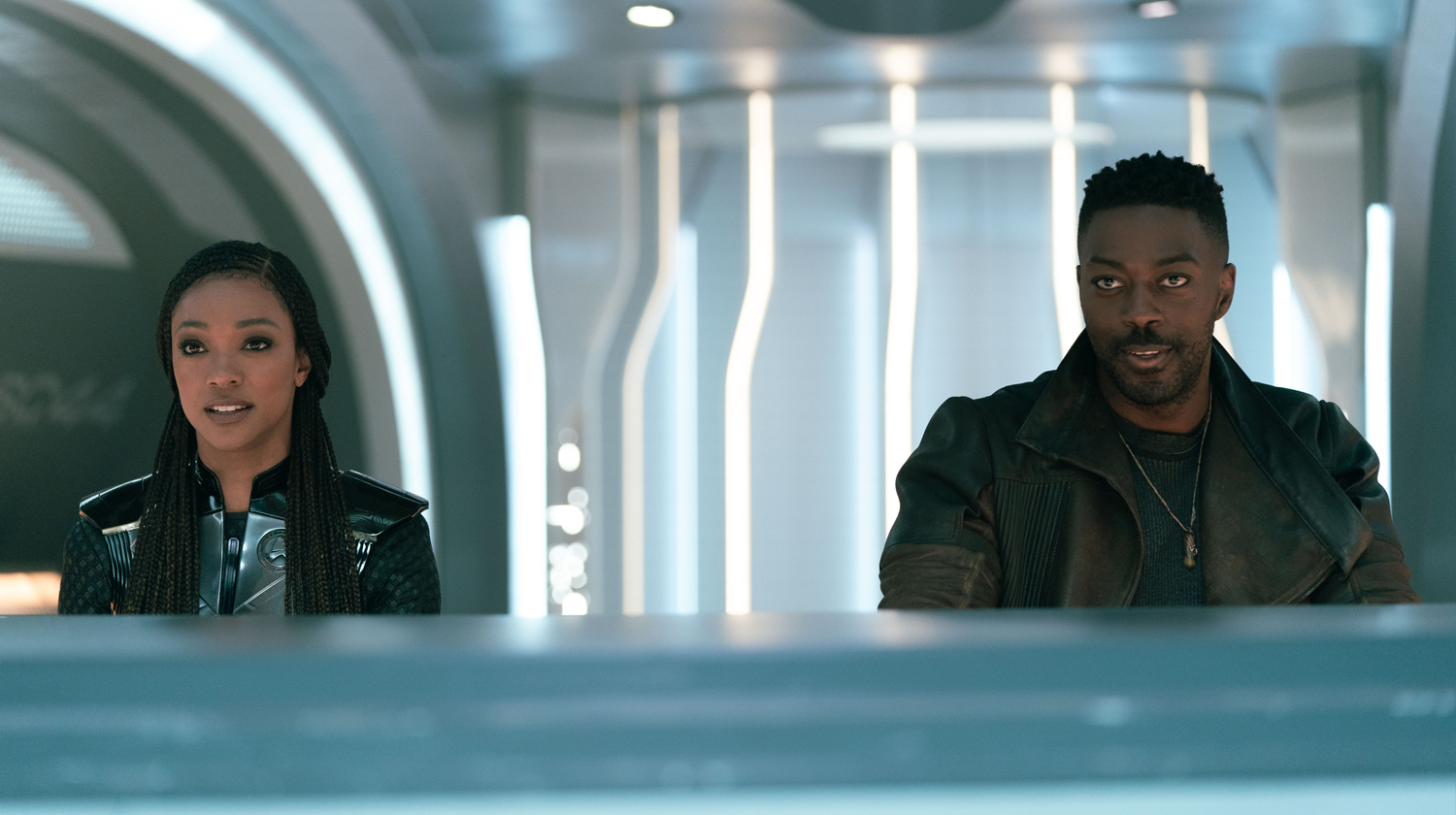
The pacing of this episode, and with the exception of using the Enterprise, when any other Constitution Class starship could've worked — and served to expand the Mirror Universe a little bit — this is an enjoyable episode. It's a shame though that this is following the same cookie cutter seasonal storyline template by relying very much on a quest to follow while having standalone episode-long adventures to fill in the gaps, but hey, it can't be much worse than last season. So, there's that.
The fifth and final season of "Star Trek: Discovery" and every other episode of every "Star Trek" show — with the exception of "Star Trek: Prodigy" — currently streams exclusively on Paramount Plus in the US, while "Prodigy" has found a new home on Netflix.
Internationally, the shows are available on Paramount Plus in Australia, Latin America, the UK and South Korea, as well as on Pluto TV in Austria, France, Germany, Italy, Spain and Switzerland on the Pluto TV Sci-Fi channel. They also stream on Paramount Plus in Italy, France, Germany, Switzerland and Austria. In Canada, they air on Bell Media's CTV Sci-Fi Channel and stream on Crave.
Join our Space Forums to keep talking space on the latest missions, night sky and more! And if you have a news tip, correction or comment, let us know at: community@space.com.
When Scott's application to the NASA astronaut training program was turned down, he was naturally upset...as any 6-year-old boy would be. He chose instead to write as much as he possibly could about science, technology and space exploration. He graduated from The University of Coventry and received his training on Fleet Street in London. He still hopes to be the first journalist in space.
